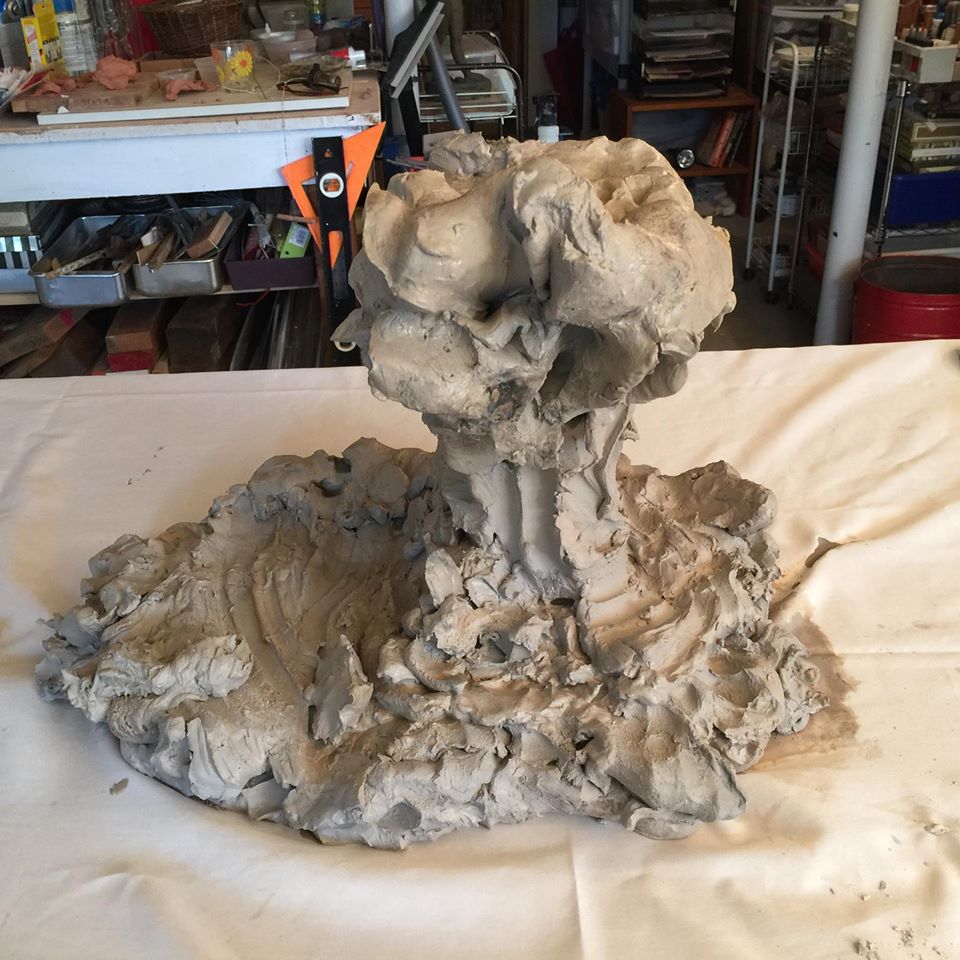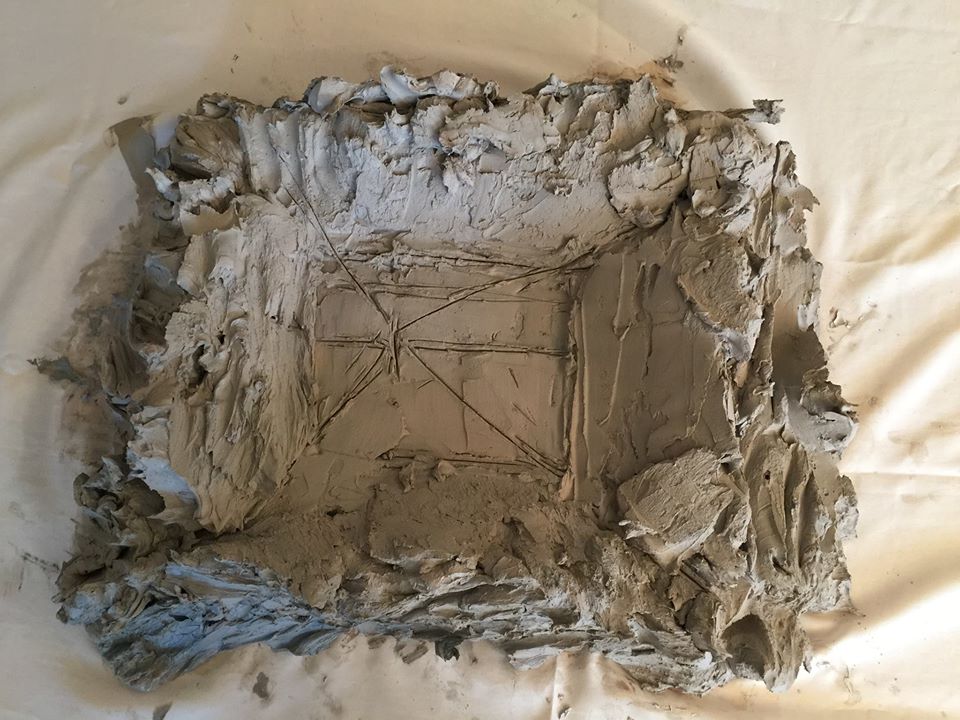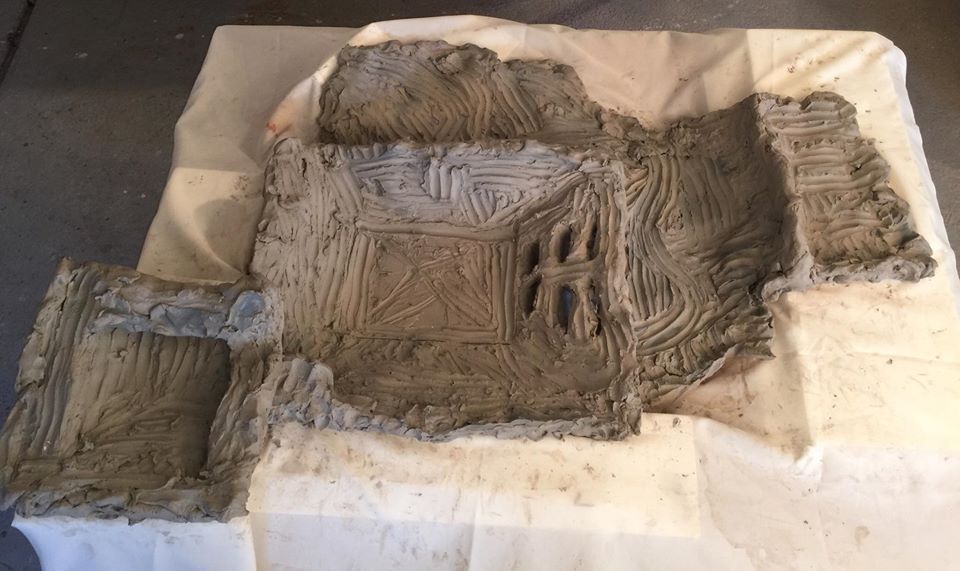


Technique
A friend visited my studio last week and was surprised to see the early start to one of my sculptures. People assume I take a block of clay and carve it.
I usually begin making the clay and wedging it into various blobs. I will take one and add and remove clay until I can see what I’m doing. I draw on the clay and will pound, cut, scrape, pinch, claw and shape the clay with my hands and various tools. I often have a drawing, an observation, memory or dream that I pick as my subject.
The method is cut and fill, like tool and die work but on a larger scale. I’m also removing clay, forming with a knife or flat tool, in the the spirit of carving without the elegant simplicity. Also, unlike wood or stone, clay allows me to add back and repair any damage.
Compression is an important technical aspect of sculpture. The natural tendency of clay that is unsupported without an armature is to slump down with gravity. In many of my freestanding as well as relief objects, I experiment with how form supports structure.
Teachers
Mrs Winkelhorn, my grade-middle-early high school art teacher led me to the challenge of gravity when I was having trouble making small standing figurines. It wasn’t a timely study back in 1970 when Eva Hesse was hanging rather than standing. A more painterly De Kooning style is to squeeze clay to make form and balance. As structural technique, it works very well and is very expressive. It appears secondary in my sculptures do not appear to be under dynamic pressure. Alternatively, it’s possible to add more grog to clay to make the body stronger. Working with gorged clay can be looser as it has more natural strength, but it’s not great for detail. Possible to mix clays but I’ve appreciated the challenge.
Background
I grew in in NYC surrounded by arts, crafts, comfort, struggle, luxury, poverty, high, low, complexity and contradiction.
Ours was a small extended family. My mother’s mother, my Nana lived with us since she became a widow before I was born. We had Sunday and holiday dinners with various aunts, uncles and cousins. Nana and my mother would sit after dinner making quilts and blankets. My grandmother also knitted, crocheted, made needlepoint and crewel. She hemmed, adjusted and mended my clothes and made me a deep red skating outfit. Her grandfather had been a tailor, her father a dentist and leecher. She was one of ten children living who settled in Troy, New York and a brief adventure in California in the 1870s. My great grandmother went across in a train alone with three children and came back with five. My great grandfather followed. Nana wielded shears and needles adeptly despite arthritis. Her fingers seemed all fumble, like my uncle’s, yet they somehow managed to make and do beautiful things. My Barbie doll had a tweed coat and a golden evening gown. I put the coat over the gown, to my mother’s chagrin. Surely Nana made her a small mink stole or fox fur, or maybe crocheted a shrug. I loved watching my mother with editor’s shears, to hear that szshshhhhhwwwwipe through paper, single motion.
At some point, Nana started to ask me to thread needles. I marveled how easy it was to put a thin thread through a large eye, but then she’d give me different, more challenging threads and thinner needles. When she was home and not away or traveling, I loved hanging with her after school. She had her sewing machine and all its bobbins and parts, an ILGWU plastic tag, bits and pieces of fur, fabric and old lace, all kinds of buttons, clasps and elastic. Trays of semi-precious stones from Brazil. Old glass beads and silver jewelry.
We watched television after dinner which was sometimes not over until 7 pm. I’d pretend to go to bed but would stay up watching the Late Show and Late Late Show, Late Late Late, Million Dollar Movie. Not so good for a teenager’s health, I’d scraggle into school half-slept.
My parents who owned and ran a small greeting card publishing business would home late during their busy season, just before dinner at 7 PM, so I would spend after school and late night TV time with my beloved grandmother. We were blessed to be fed and kept clean by the beautiful woman who took care of my older brother and me from when I was six months old, staying to look after me until I left to college.
My dad was a cartoonist, and mom a writer. Together they created and sustained a creative partnership and enterprise for sixty-two years. I loved to visit their office and factory after school, 17 west 17, 18 west 18 and then 511 east 72 across from now Sotheby’s, long before they are what they are today. The factory became my model for my studio. Shipping, boxing, packing, cutting, printing, imprinting, assembling. It smelled wonderfully of ink, paper and activity. Sounds of chattering, yelling, talking, concentration, machines.